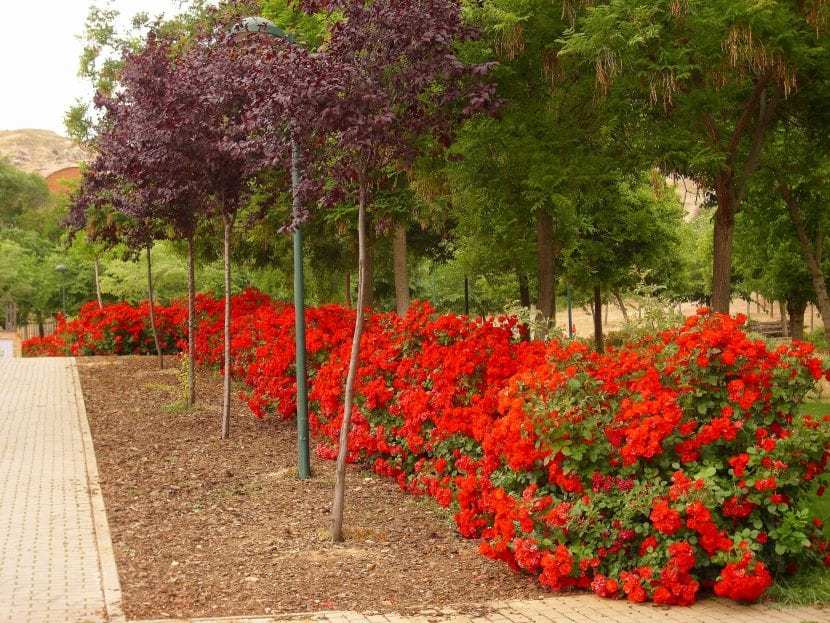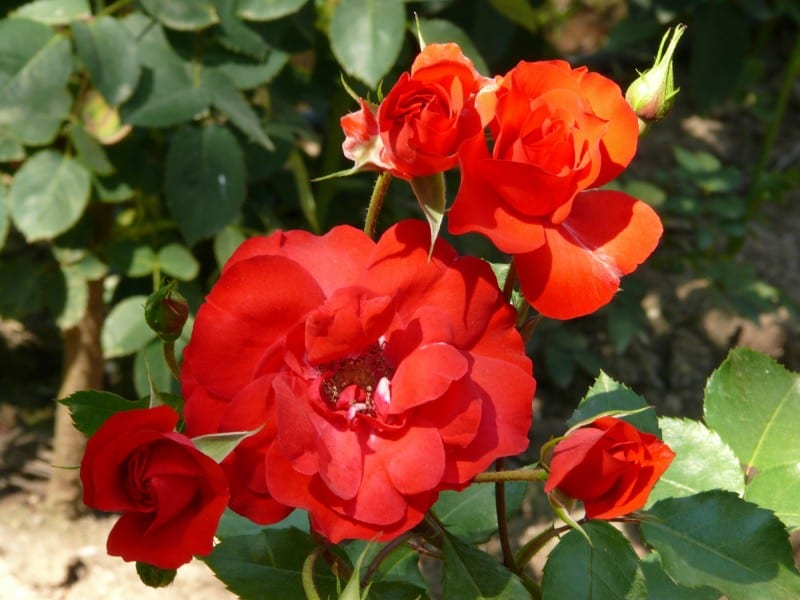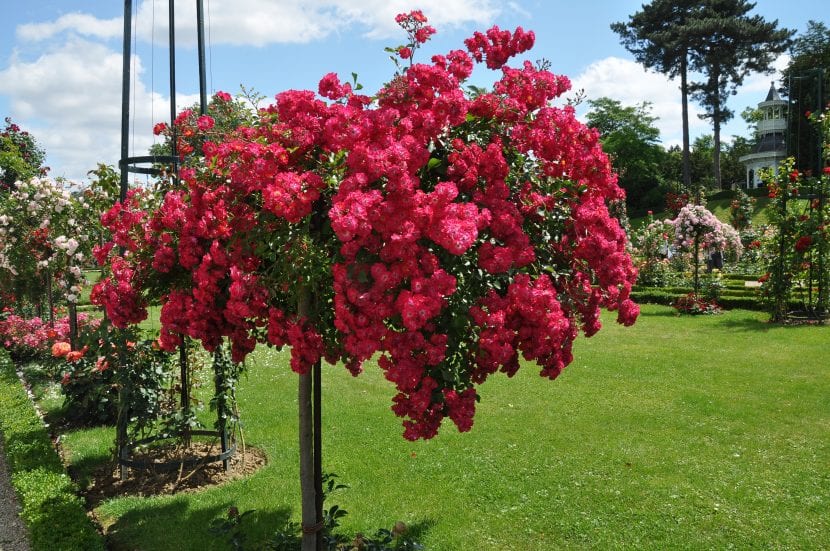
Rose bush lover? I understand you! I know what it is to walk, for example in the nursery, and see a lot of beautiful and cheerful roses. Years ago my mother marked out a path with some specimens with different colored flowers, and it was a joy to be there, contemplating them. Although there was one in particular that you couldn't stop looking at: the Sevillian rosebush.
Although it is a shrub with more or less erect branches, it can be planted in large pots and kept as a pendant, which makes it look very, very pretty. But, How do you take care of yourself? If you want to know, then I'll tell you 🙂.
Origin and characteristics

Image - fotosmundo.com
The Sevillian rose bush, whose scientific name is Rosa 'La Sevillana', is a modern rose that belongs to the Floribunda group created in France in 1978 by the French rose artist Marie-Louise Meilland. It comes from the crossing of seeds (Melbrim x Jolie Madame x Zambra x Zambra) and pollen (Tropicana x Tropicana) x Poppy Flash x Rusticana).
It has an upright bearing, and reaches between 60 and 120cm tall by about 150cm wide. The leaves are dark green and shiny. The flowers, which appear in spring and summer, measure about 5cm, and have 9-16 orange or orange-red petals. These are fragrant.
It is one of the rose bushes that produces the most roses, but the most.
What are their cares?

If you want to have a copy, we recommend that you provide it with the following care:
- Location: outside, in full sun.
- Earth:
- Pot: universal growing substrate mixed with 30% perlite.
- Garden: it is indifferent as long as it has good drainage.
- Irrigation: frequent. You have to water 4-5 times a week in summer, and every 2-3 days the rest of the year.
- Subscriber: from spring to late summer with ecological fertilizers, once a month. If it is in a pot, we will use liquid fertilizers following the instructions specified on the container.
- Multiplication: by semi-woody cuttings in late winter (February in the northern hemisphere).
- Pruning: at the end of winter the dry, diseased and weak branches have to be removed, and the rest have to be trimmed a little. In addition, you have to remove the withered roses so that they come out again.
- Rusticity: withstands cold and frosts down to -6ºC.
What did you think of the Sevillian rose bush? Did you know him?
The garden is very beautiful and well, they teach us how to prune it
I want to plant a garden garden in my school
Hello marisol.
En this article we explain how to prune rose bushes.
a greeting